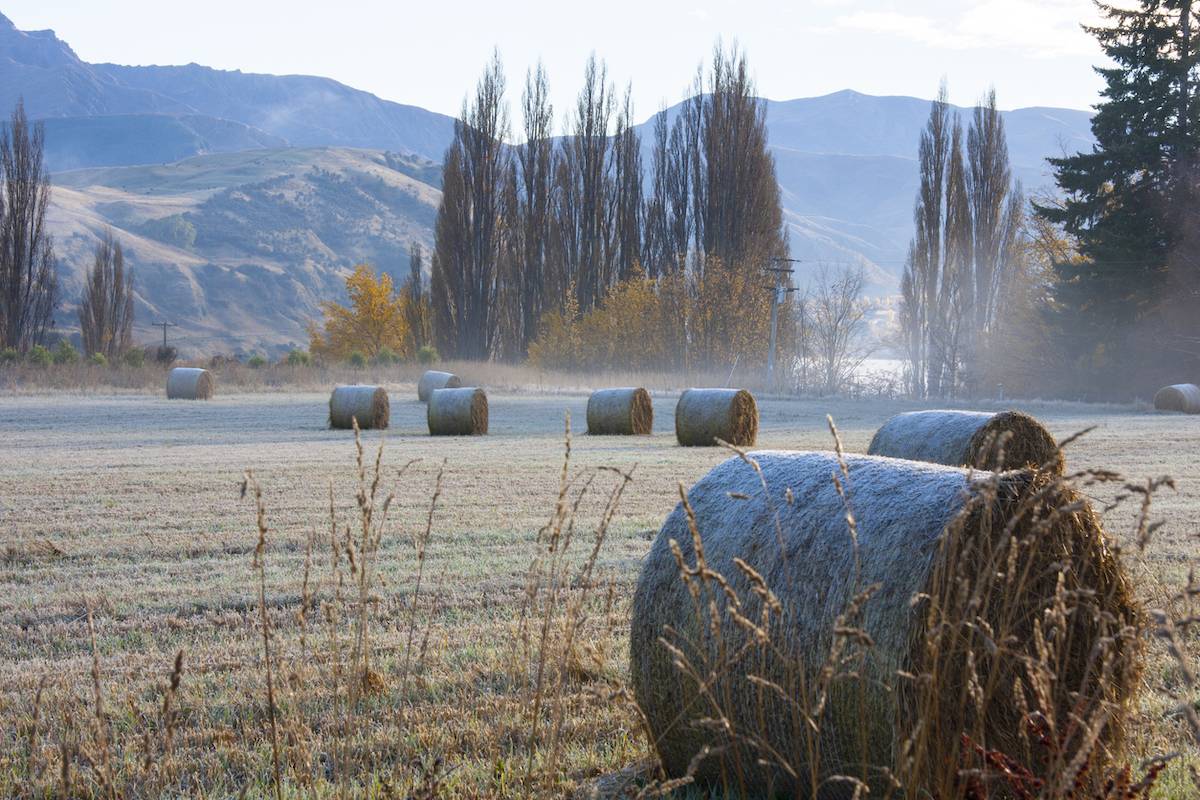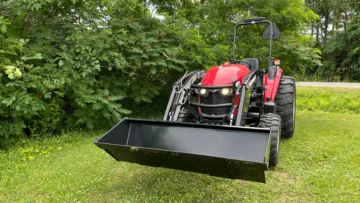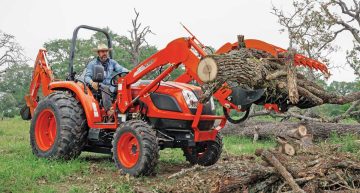🚜
Make sure you’re prepared for the changing seasons and use these tips to successfully operate your tractor in cold weather.

Taking the winter off isn’t a luxury everyone can afford. When you have a property to maintain, the work never stops. Instead of winterizing your tractor for storage, you have to figure out how to get the most out of it, no matter what the weather brings.
Make sure you’re prepared for the changing seasons and use these tips to successfully operate your tractor in cold weather.
Keep Your Tractor as Warm as Possible
The best way to ensure your tractor starts up on those chilly mornings is to keep it as warm as possible when not in use. If possible, park your tractor indoors in a heated garage or barn. When that’s not an option, remove it from the elements as much as possible, either parking it in a covered area or draping it with a heavy, waterproof tarp.
For those in especially cold climates, an engine block heater might be necessary. These relatively simple devices will work to preheat the engine’s fluids for an easier start. You may also want to consider removing the battery and storing it indoors at night to help preserve its charge.
Winterize Your Fuel
The best way to ensure your tractor starts up on those chilly mornings is to keep it as warm as possible when not in use. If possible, park your tractor indoors in a heated garage or barn. When that’s not an option, remove it from the elements as much as possible, either parking it in a covered area or draping it with a heavy, waterproof tarp.
For those in especially cold climates, an engine block heater might be necessary. These relatively simple devices will work to preheat the engine’s fluids for an easier start. You may also want to consider removing the battery and storing it indoors at night to help preserve its charge.

Check Tire Tread
To run your tractor successfully in winter conditions, the type of tire tread is critical. Turf tread will have a difficult time maintaining traction in snow and ice. Instead, you’ll want to equip your machine with a more aggressive tread such as ag tread or industrial tread. Both options are available through our Custom Tractor Builder or through dealers. For additional traction, consider adding tire chains as well.
Ballast for Safety
Another essential component of maintaining traction on snow and ice is proper ballasting. This can be achieved by adding a liquid ballast to the tires that can withstand low temperatures, such as windshield washer fluid or antifreeze. However, it’s important to never operate the tractor if the liquid ballast freezes in the wheels.
Further, you can add a weighted ballast box to the rear of the tractor to help stabilize your wheels on slippery terrain. This works just like adding sandbags to the bed of a pickup truck, providing better weight distribution and stability.
Clear Surfaces and Intakes
Just as you would clear dirt and debris from intakes and surfaces in the summer months, the same applies for snow and ice in the winter. Check air intakes and your air filter daily, as well as other components such as fan belts that may be impacted by the cold. For your own safety, regularly clear steps, handles, and other surfaces that could become slippery when coated in ice.
Allow for Additional Time
When there’s a lot of work to be done, it’s tempting to work as fast as you can. Unfortunately, sometimes winter conditions force you to slow down a little. When roads are packed with snow and ice, operate at a lower speed in four-wheel drive. All four wheels operating with the same amount of power will help you overcome slippery terrain and also provide better control braking.
If your work day comes with the risk of getting stuck in the cold far away from home, have a plan for how to stay warm. This could include packing extra layers of clothing, or a Yanmar Maintenance Kit that has the spare parts you need in a pinch.
Know Where You’re Going
A fresh layer of snow hides dangerous obstacles that can damage your tractor or cause injury. Whenever operating in these conditions, know where you’re going and understand the lay of the land. The same goes for operating snow removal attachments. Always have a plan of where you’ll be putting the snow, being careful to avoid the edge of steep slopes or drop offs.
Budget Web Solutions
Leave a Replay

Sign up for our Newsletter
Check Rebates & Incentives At McMichael’s Equipment. Call Us (540)-349-2800







